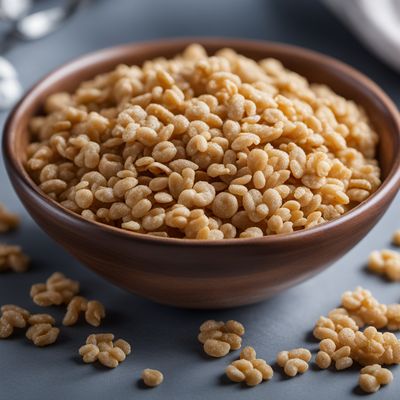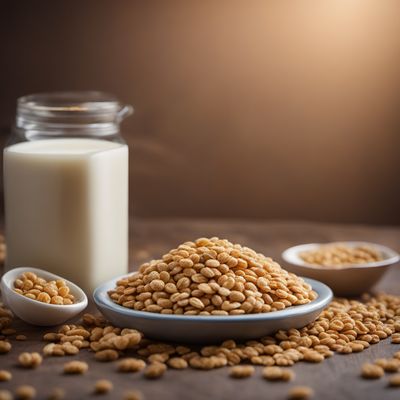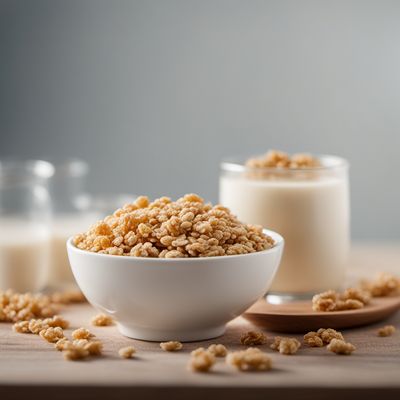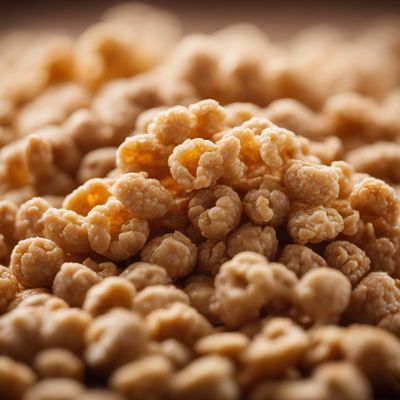
Ingredient
Pasta for children (dry, to be cooked)
Kid-Friendly Noodles
Pasta for children is similar to regular pasta in terms of taste and texture, but it is often made with whole grains or fortified with additional nutrients. It is designed to be easily cooked and chewed by children, with fun shapes and sizes that make mealtime more enjoyable. This pasta is a convenient option for parents looking to provide a balanced and nutritious meal for their little ones.
Origins and history
The concept of pasta originated in ancient China, but it was popularized by Italian cuisine and has since become a staple in many cultures worldwide. Pasta for children is a modern adaptation that focuses on providing a nutritious and appealing option for young eaters. It is available in various shapes and sizes, including animal shapes, letters, and numbers, to make mealtime more fun and engaging for children.
Nutritional information
Pasta for children is a good source of carbohydrates, which provide energy for growing bodies. It is often made with whole grains, which offer additional fiber and essential nutrients. Some varieties may also be fortified with vitamins and minerals to support children's nutritional needs. However, it is important to check the ingredient list for any potential allergens or additives.
Allergens
Pasta for children may contain allergens such as wheat, eggs, or dairy, depending on the specific brand and variety. It is important to read the label carefully and choose options that are suitable for your child's dietary restrictions or allergies.
How to select
When selecting pasta for children, look for options that are made with whole grains or fortified with additional nutrients. Choose shapes and sizes that are appealing to your child, as this can make mealtime more enjoyable. Opt for brands that use high-quality ingredients and have a reputation for producing safe and nutritious products.
Storage recommendations
To maintain the freshness and quality of pasta for children, store it in a cool, dry place away from direct sunlight. Once cooked, store any leftovers in an airtight container in the refrigerator and consume within 2-3 days. Avoid overcooking the pasta to prevent it from becoming mushy or sticky.
How to produce
Pasta for children is typically produced by large-scale manufacturers using specialized equipment and processes. It is not commonly produced by amateur cooks or small-scale operations due to the specific requirements for shaping and drying the pasta. However, parents can easily cook pasta for children at home by following the instructions on the packaging.
Preparation tips
Pasta for children can be prepared in various ways, including boiling, baking, or sautéing. It can be served with a variety of sauces, such as tomato sauce, cheese sauce, or pesto. Add vegetables, lean proteins, or legumes to create a balanced and nutritious meal for children. Pasta for children can also be used in salads, casseroles, or as a filling for stuffed pasta dishes.
Culinary uses
Pasta for children is commonly used in dishes such as macaroni and cheese, spaghetti with tomato sauce, pasta salads, and pasta bakes. It is a versatile ingredient that can be incorporated into various cuisines and dishes that children enjoy.
Availability
Pasta for children is widely available in supermarkets, grocery stores, and online retailers. It is commonly found in countries with a high demand for children's food products, such as the United States, United Kingdom, Australia, and Canada.
More ingredients from this category

Cereals with an added high protein food which have to be reconstituted with water or other protein-free liquid
Protein-Packed Cereal Powerhouse

Biscuits, rusks and cookies for children
Delightful Treats for Little Ones

Simple cereals which have to be reconstituted with milk or other appropriate nutritious liquids
The Power of Reconstituted Cereal: A Wholesome Morning Meal

Simple cereals for infants or children, reconstituted
Nourishing Start for Little Ones

Cereals with an added high protein food reconstituted
Protein-Packed Cereal Powerhouse